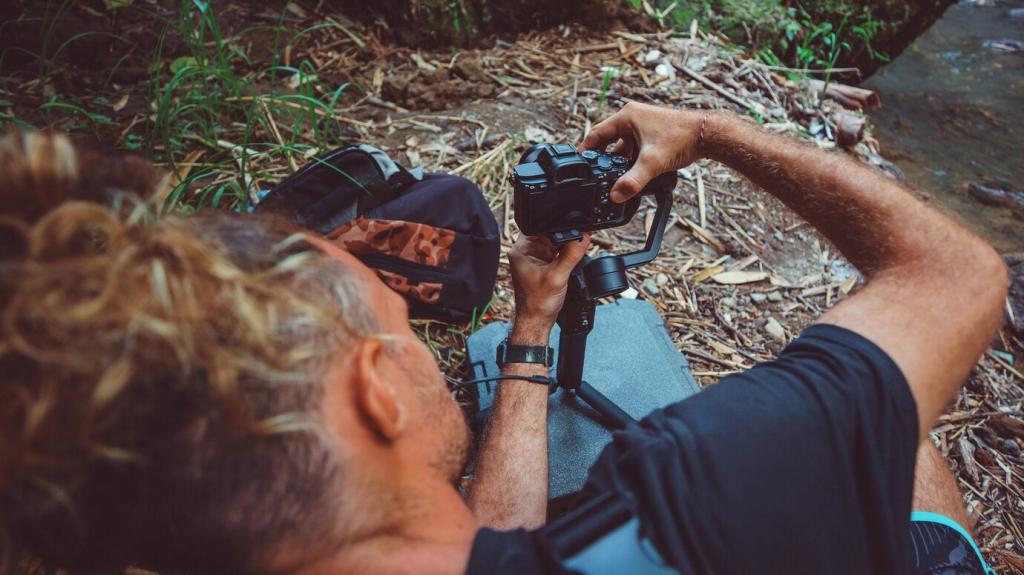Insulated Hiking Gear for Cold Weather: Stay Warm, Go Far
Chosen theme: Insulated Hiking Gear for Cold Weather. Welcome to your warmth-first trail guide, where we translate frigid forecasts into confident footsteps. Subscribe for field-tested tips, share your layering wins, and help fellow hikers thrive when temperatures plunge.

The Physics of Warmth on the Trail
Insulation works by trapping still air, slowing conduction and convection while reducing radiative loss. A lofty puffy blocks cold air migration, while snug but breathable layers minimize drafts that steal warmth during ridge-top gusts and snowy stops.
Insulation Showdown: Down vs. Synthetic
High-Fill Down for Bone-Dry Cold
Down with high fill power delivers unbeatable warmth-to-weight and compresses small. It excels in cold, dry conditions and long trips, but requires careful moisture management and ethical sourcing to protect loft, performance, and your values.
Synthetic Insulation for Wet and Variable Days
Modern synthetic fibers keep warming even when damp and dry faster after sleet or breath frost. They resist moisture collapse, making them a smart choice for mixed precipitation, creek crossings, and sweat-prone ascents in shoulder-season cold.
Hybrid Strategies for Real Trails
Combine a down belay puffy with a synthetic-active midlayer to handle climbs and rests. This flexible system adapts to shifting weather and effort, staying warm at breaks while breathing well when the trail turns steep.
Base Layers: The Foundation of Dry Warmth
Choose merino or high-end synthetics for wicking and odor control. Grid patterns move moisture efficiently while trapping heat. Avoid cotton completely, and keep a dry spare base top sealed for camp or unexpected extended rest.
Midlayers: Active Insulation in Motion
Fleece or air-permeable synthetic insulation shines during sustained movement. Look for breathable face fabrics, generous zips, and mapped panels that vent heat without sacrificing core warmth while ascending icy switchbacks with a heavy pack.
Shells: Managing Weather and Venting
Softshells excel in cold, dry wind; hardshells guard against sleet and spindrift. Prioritize pit zips, two-way front zippers, and adjustable hems to dump heat fast without exposing your insulating layers to wet, chilling conditions.
Feet First: Boots, Socks, and Traction
Pick boots with adequate insulation, room for thick socks, and a stiff enough platform for variable snow. Pair with tall, snug gaiters to block spindrift and keep cuffs dry when stomping through drifted, wind-loaded gullies.


Glove Systems for Any Forecast
Layer a wicking liner under insulated gloves or mittens, then add a shell in driving wind. Mittens preserve more heat at rest; gloves offer dexterity during tasks. Carry a spare dry pair for emergencies and morale.

Hats, Balaclavas, and Neck Gaiters
Covering cheeks and neck reduces perceived windchill dramatically. A merino balaclava under a windproof beanie keeps breath frost manageable. Rotate damp face coverings to maintain warmth during blustery ridge walks and shady, frozen creek bottoms.

The Belay Puffer Ritual
Throw on an oversized, high-loft puffy the moment you stop moving. This simple habit preserves precious heat and keeps sweat chill at bay during snack breaks, route planning, or sunset photography in subfreezing gusts.
Pack Smart: Weight, Volume, and Redundancy
Compression Without Killing Loft
Use roomy stuff sacks for down so feathers bounce back quickly. Avoid over-compressing for days on end. Pack synthetics tighter if needed, but always fluff layers during brief stops to restore maximum insulating performance.
Backup Warmth That Saves Days
Pack extra liner gloves, socks, and a compact emergency bivy. Chemical warmers are ultralight insurance for long descents. A small thermos of hot tea lifts spirits and gently raises core temperature when energy dips hardest.
Hydration That Won’t Freeze Solid
Use insulated sleeves, stow bottles upside down, and favor wide-mouth lids. Keep one bottle near your back under an insulating layer. Add warm water at the trailhead to gain hours before ice crystals creep in.
Care, Maintenance, and Gear Longevity

Drying and Restoring Loft
Air-dry damp layers promptly, then tumble low with clean tennis balls to re-loft down. Store uncompressed at home. Regular, gentle washing with down-safe or synthetic-specific detergents preserves warmth and fabric breathability for winter missions.

Simple Field Repairs, Big Returns
Tenacious tape patches pinholes quickly, preventing down leaks and soaked insulation. Seam repair and zipper lube keep shells sealing. Carry a tiny repair kit so small failures never snowball into shivering, trip-shortening problems in frigid valleys.

Ethics and Sustainability Matter
Look for Responsible Down Standard certifications and recycled synthetic fills. Durable gear reduces waste and saves money over time. Share brands you trust to help the community choose warmer, kinder options for cold-season adventures.
